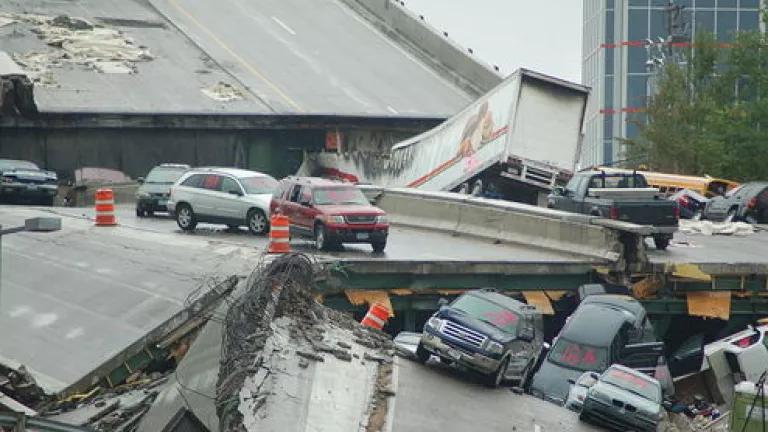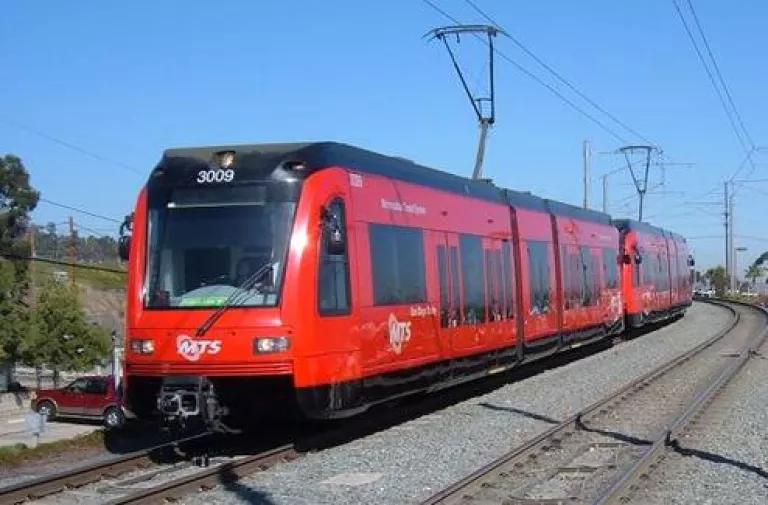
"If you do what you've always done, you get what you've always gotten." -Tony Robbins
When you think about transportation issues, what's the first thing that comes to mind? High gas prices and troubled bridges. There was the "bridge to nowhere," which after this election season is probably the most famous bridge in history. Then, there was the disastrous bridge collapse in Minneapolis.
And who hasn't coughed up some serious $ at a gas station, especially earlier this year (just a few years ago $3 was hard to imagine, but now...)?
It's pathetic that these are the first images that come to mind when we think of transportation in America, which is why NRDC has joined with several other groups representing millions of fellow citizens to create a list of ideas for President-Elect Obama and his team as they decide how to transition the nation into the 21st century.
I co-chaired the team that assembled recommendations for the Department of Transportation. Truth be told, transportation often plays second fiddle to other priorities, like energy and national security. This makes no sense, since transportation drives these other priorities. It drives up oil use, and consequently drives down national security as we become more dependent on imports. It also drives a lot of our economy: 35 percent of all of our national assets are in the built environment (including buildings and roads). Yet for decades we have had an aimless policy for shaping this cornerstone of our economy. Now is the time to change that.
We have three big recommendations for reforming the Department of Transportation (DOT) so that it is an instrument for achieving, not undermining, oil saving, climate and economic recovery goals: 1) Move to clean transportation technologies and fuels, 2) reform surface transportation policy and 3) establish a cross-departmental climate change priority. To achieve this, we recommend the following actions (see the bigger document for legislative and budget ideas too):
1) Clean transportation technologies and fuels:
- Boost CAFE standards above the floor set by Congress in last year's energy bill, as is within the authority of DOT, to 42 miles per gallon by 2020, helping to achieve the President-Elect's goal of saving as much oil as we import from Middle East and Venezuela.
- Maximize heavy truck fuel economy standards, as authorized by last year's energy bill, so they apply beginning in model year 2015, also saving a lot of oil.
- Remove language from the Bush Administration rulemaking that mentions preemption of greenhouse gas standards, and instead make DOT collaborate with EPA in improving vehicle performance.
- Form a low-carbon aviation initiative in lieu of the Commercial Aviation Alternative Fuels Initiative, the focus of which is too broad in some respects (studying high-carbon fuels) and too narrow in others (efficiency is not covered).
2) Reformed surface transportation policy:
- Establish environmental and health performance standards, to take us away from the decades-old policy model of relaying billions of dollars of taxpayer money based on outdated formulas, digging us deeper and deeper into oil addiction and the pollution spewed by our fleet of vehicles.
- Establish goals for scaling up use of alternatives to cars, which will require dramatically increased investments in commuter rail, buses as well as bicycle and pedestrian infrastructure. There's increasing interest in diversifying our electricity portfolio so that consumers have low-carbon options like wind power; similarly we need to diversity our transportation portfolio to provide low-carbon travel choices like public transportation.
- Revise planning guidelines for state and metro areas, so that projects address the needs of all users, not just drivers.
- Require "complete streets," or streets that provide safe and easy access for pedestrians and bicyclists (how about more sidewalks, for example?).
3) Transportation as means for solving, not exacerbating, the climate challenge:
- Create an "infrastructure czar" in the White House to align the use our taxpayer dollars so that we invest in low-carbon choices.
- Reorganize DOT so that "intermodalism" -- connections between ways of traveling -- is a priority.
- Create an Assistant Secretary for Climate Change, with real funding, responsibility and accountability.
- Develop targets for cutting global warming pollution, and the tools to accurately measure emission reductions.
- Create a national freight planning board, so that the we can handle growing goods movement without digging us deeper into oil dependence.

Making these and other changes expeditiously will take us into a future with a real array of clean transportation choices for Americans. This will be especially important for kids and aging baby boomers, since driving may not always be the best option and shouldn't be the only option. And by transforming transportation in this way, we will create new jobs (in fact, why not ask Detroit to make rail cars for the new system?) and secure both our energy and climate future.